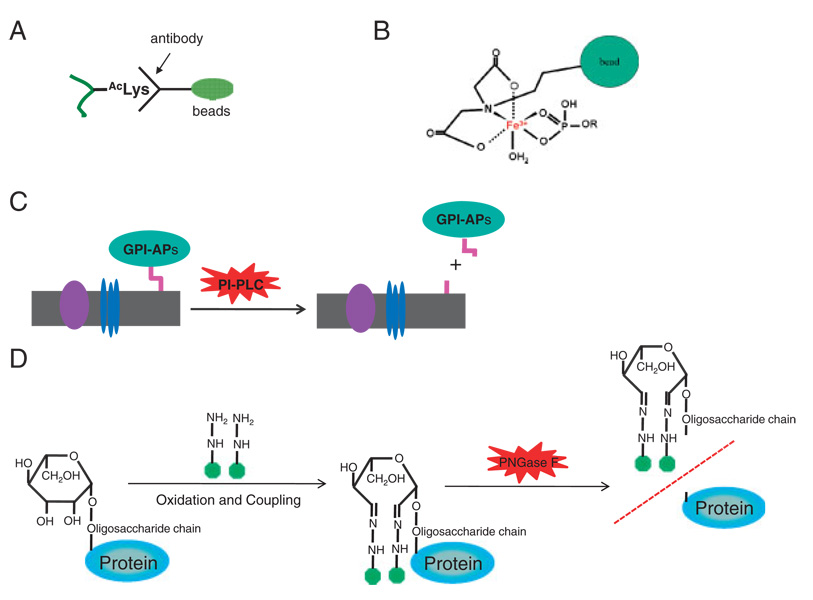Figure 2.
Example strategies for enriching PTM peptides. (A) Antibody-based affinity purification for isolation of lysine acetylated peptides. An antibody immobilized to a solid support can bind AcLys peptide for enrichment. (B) IMAC for enriching phosphopeptides. Ferric ion (Fe3+) immobilized in solid beads (indicated by a solid green circle) bind specifically phosphate group in a phosphopeptide. (C) Isolation of GPI-APs by enzyme-catalyzed specific release. The plasma membrane fraction is isolated. The GPI-APs are specifically released from the membrane when phosphatidylinositol phospholipase hydrolyzes the phosphatidylinositol. (D) Chemical derivatization and subsequent enzymatic cleavage for isolation of glycosylated proteins. To isolate glycoproteins, glycoproteins are first oxidized and conjugated to hydrazide beads, while non-glycoproteins can be removed. The glycoproteins are then released by PNGase F. Abbreviations: PI-PLC, phosphatidylinositol phospholipase C; PNGase F, peptide-N-glycosidase F.

